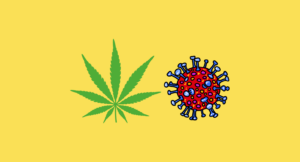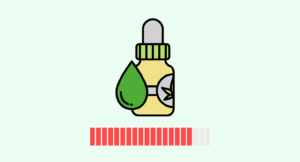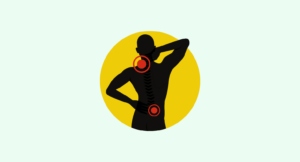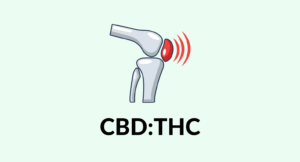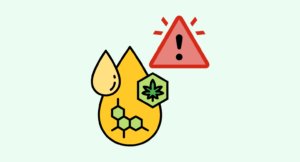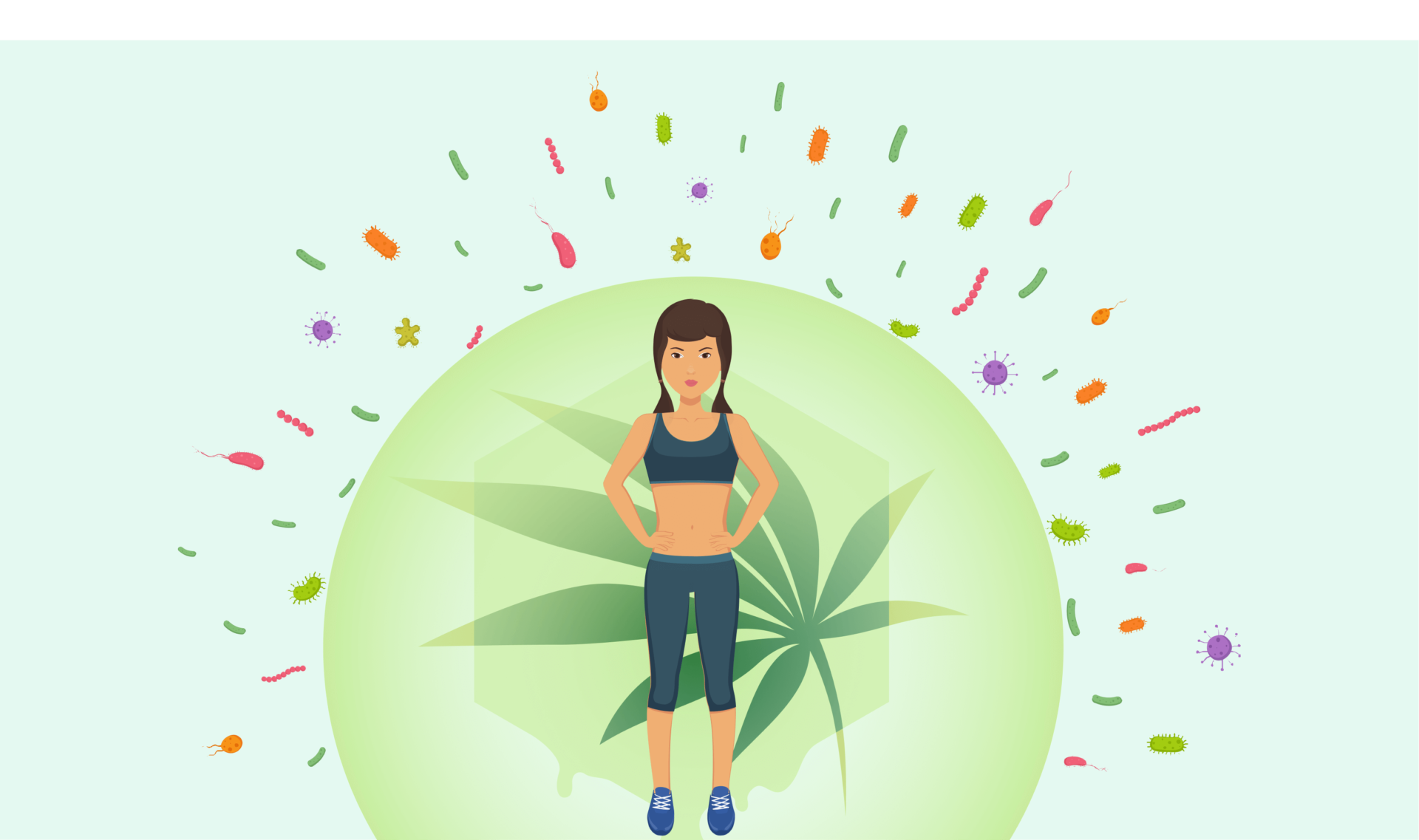
Evidence based
How Long Does CBD Stay In Your System
The amount of time CBD remains in the body depends on how much you took, how often you use it, and what form of CBD you’re using.
Regardless if you’re a long-term CBD user or you have just begun your CBD journey, you may be wondering — “how long does CBD stay in the body?”
Different methods of CBD administration produce different results. You may feel the effects of CBD quickly after inhalation. But, how long does CBD stick around after the effects wear off?
If you want to take a short break, increase your dose, switch from one method of consumption to another, or are simply curious about what happens to CBD after it enters the body — we provide you with all the answers.
In this article, we’ll cover how CBD is absorbed, metabolized, and excreted. We’ll compare long term CBD use with short term and how this can affect the amount of time CBD remains in your body after the effects have worn off.

So, How Long Does CBD Oil Stay in Your System?
We need more research to get a definitive answer to the amount of time it takes CBD to leave your body. But here’s what we know so far:
CBD won’t be in your system for longer than 7 days after your last use — unless you’re a frequent user of CBD (more than 10 mg per day for several weeks).
In this case, CBD may linger for up to two more weeks depending on how often you use it.
What the Research Says
In a study published in Pharmacology, Biochemistry, and Behavior, 14 patients with Huntington’s disease were given an extremely high dosage of oral CBD (10 mg/kg/day — about 700 mg/day) for six weeks. The study found that the levels of CBD dropped to an average of 1.5 ng/ml one week after discontinuing CBD. Cannabidiol levels were virtually undetectable after about a week [1].
The study found the elimination half-life of CBD was about 2-5 days. There was no difference between genders for the half-life of CBD. This half-life is significantly shorter for people who don’t use CBD regularly.
What Does CBD Half-Life Mean?
The elimination half-life of a drug or compound is a common measurement in medicine to determine the time it takes for 50% of the starting dose of a compound to leave the body.
Each half-life results in proportionally less elimination.
Here’s how the half-life of CBD works — assuming the half-life of 10 mg CBD is 3 hours [2]:
- About an hour after taking, CBD reaches peak concentration of 10 mg
- After the first half-life (3 hours) there’s only 5 mg of CBD left in the body
- After the second half-life (6 hours) only 2.5 mg of CBD is left in the body
- After the third half-life (9 hours) only 1.25 mg of CBD is left in the body
- After the fourth half-life (12 hours) 0.62 mg of CBD is left in the body
Amount of CBD Left in the System Over Time
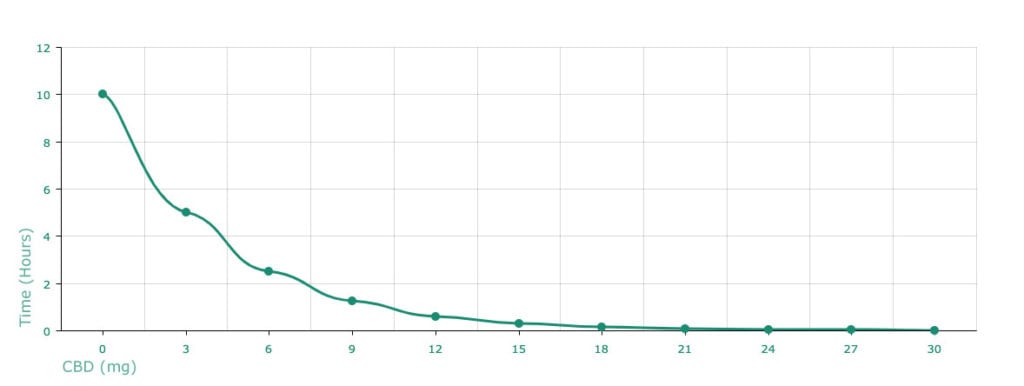
The half-life changes depending on the mode of administration and the amount of time CBD is used. Smoking CBD has a 31-hour half-life, and using oral CBD for long periods of time increases the half-life to 2-5 days [2].
Estimated CBD Concentrations After 10 mg Dose
| Time After Dose | Oral CBD (Single Dose) | Oral CBD (Long-Term Use) | Inhaled CBD |
| 3 Hours | 5 mg | 10 mg | 10 mg |
| 24 Hours | 0.3 mg | 8 mg | 6 mg |
| 3 Days | 0 mg | 5 mg | 2.3 mg |
| 1 Week | 0 mg | 2.3 mg | 0.3 mg |
The bottom line is that single-use CBD will be gone from the system in about a day, while regular users of CBD and those who smoke or vape to get their CBD may need to wait a week or longer for the CBD to leave the system completely.
What Happens When CBD Is Consumed at a Much Lower Dose?
As you might imagine, lower doses of CBD won’t stick around in the bloodstream as long as high doses.
A study published in Therapeutic Drug Monitoring found that 1.35 mg of CBD and 2.5 mg of THC were only detectable in the blood for about 6 hours after ingestion [3].
It’s important to keep in mind that the seven-day time frame can vary from person to person. The time it takes for CBD to leave your system depends on several factors, including:
- Your individual metabolism
- The method of consumption
- How often you use CBD
- The dose of CBD you took
- Your age (older people metabolize compounds slower)
- Other medications
How Does The Body Process CBD?
The elimination of CBD directly revolves around how CBD is processed by the body.
This can change depending on the form of CBD you use:
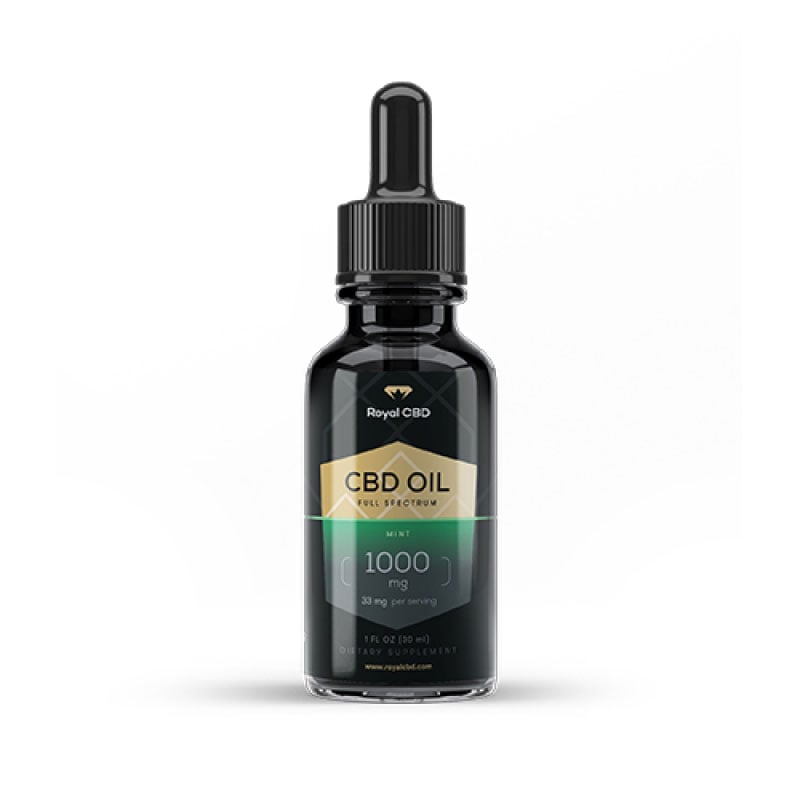
1. Oral Consumption (Swallowed)
What happens in the body when CBD is taken orally?
If administered orally, CBD has low bioavailability of around 13-19%. The bioavailability of a drug (in this case CBD) is the amount of CBD that enters the circulation to produce an active effect [2].
To better understand the bioavailability of swallowed CBD, let’s compare it with an intravenous dose (directly into the vein) of CBD. When you take CBD or any other drug directly in the vein, the bioavailability of the drug is assumed to be 100%. This is because the drug is injected directly into the systemic circulation.
Things work differently in the body when you take a CBD capsule through the mouth. The capsule material travels through the organs and gets processed in the gut and the liver before reaching the systemic circulation.
The metabolic process of CBD and other drugs that get broken down by gut and/or liver enzymes is known as the “first-pass” metabolism.
The low absorption of orally administered CBD has been largely attributed to the first-pass metabolism where CBD gets processed by the gut and the liver.
According to several studies, CBD goes through the CYP450 enzyme system in the liver — the key pathway for drug metabolism [4]. This is where CBD is inactivated and prepared to be eliminated from the body via the kidneys.
There are roughly 100 different metabolites of CBD discovered in various animal species. The major human CBD metabolites are derivatives of CBD-7-oic acid (7-COOH-CBD) [5].

There’s an exception to this metabolic pathway — molecules absorbed into the lymphatic system or distal rectum can bypass the liver.
The lymphatic system plays a role in the process of absorbing fats and fat-soluble nutrients. Cannabidiol as a highly lipophilic compound — a compound that has the ability to dissolve or combine with lipids or fats — can be transported by the lymphatic system.
The lymphatic system has a special membrane in the small intestine that takes up most of the absorbed fats from the gastrointestinal tract. The absorbed fats are delivered by the lymph fluid directly into the venous blood circulation [6].
Furthermore, studies show that when CBD is ingested together with lipids, it is better absorbed into the lymphatic system. So, it is advisable to take your CBD after a high-fat meal.
This means that CBD oil skips the first-pass metabolism in the liver. So, how does it get metabolized?
In the intestines, CBD gets metabolized by the cytochrome P450 enzyme system, more specifically by the CYP3A4 isoenzyme, which accounts for nearly 70% of the total CYP450 in the intestine and 60% in the liver. The extensive metabolism by this enzyme in the intestines is what causes the poor bioavailability of many drugs [6].
The lymphatic metabolic transport of CBD is important for several reasons, including:
Higher CBD levels compared to plasma.
Plasma is the largest component of human blood and contains water, enzymes, salts, antibodies, and other proteins. When a drug reaches the plasma, it needs to be present in a minimum concentration to produce effects, which can be hard if the drug has low bioavailability rates.
According to an animal study published in Scientific Reports, if taken together with lipids CBD has a higher chance to follow the lymphatic transport. The study found that the CBD concentrations in the lymph were 250-fold higher than in plasma. This means that if taken with a high-fat meal, the oral administration of CBD is more effective.
More effective in regulating and normalizing the immune system.
When taking CBD through the mouth after a high-fat meal, the absorption of CBD in the intestinal lymphatic system is much higher and shows potential for the treatment of autoimmune diseases [7].

Picture 1: Distribution of CBD and THC to lymph nodes. Orally administered CBD and THC in formulations with and without lipids.

2. Smoking CBD
Inhaling CBD has been shown to have rapid absorption rates because the lungs transfer CBD directly into the bloodstream. The compound reaches the blood within seconds, transferred by the network of capillaries.
A fraction of CBD converts to 7-carboxy-cannabidiol (inactive CBD) and is further metabolized to 7-carboxy-cannabidiol-glucuronide. The rest gets excreted in the urine. When using this method of consumption, CBD is rapidly absorbed within a few minutes after use, but that also means that the effects of CBD are short-lasting.
According to a 2018 review, three minutes after smoking a cigarette with 19.2 mg of CBD, the highest plasma concentrations noticed were 110 ng/ml. After an hour of initial administration, the CBD concentrations dropped to 10.2 mg/ml.
The average bioavailability of the smoke route is 31%, which means that, if inhaled, CBD tends to get absorbed into the bloodstream at a higher percentage than when taken through the mouth. But, inhaled CBD also clears up faster [2].
Suggested Reading: Guide to CBD Inhalers & Hemp Cigarettes
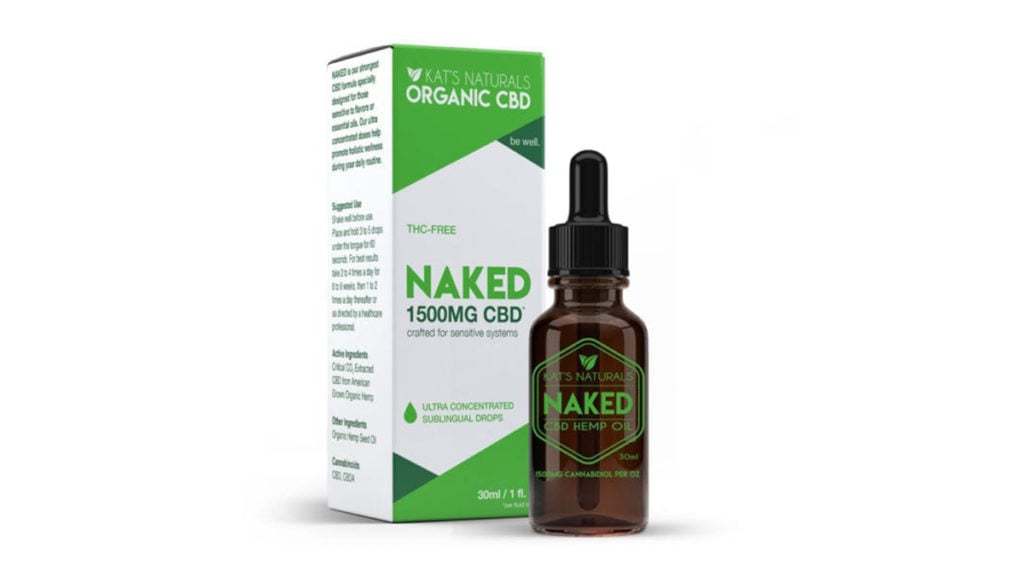
3. Sublingual Consumption
With sublingual consumption, CBD is placed under the tongue and transferred into the bloodstream via the mucous membranes and capillaries in the mouth — effectively bypassing the digestive system and the liver.
Therefore sublingual administration will follow a similar path of metabolism and excretion to inhaled or smoked CBD.
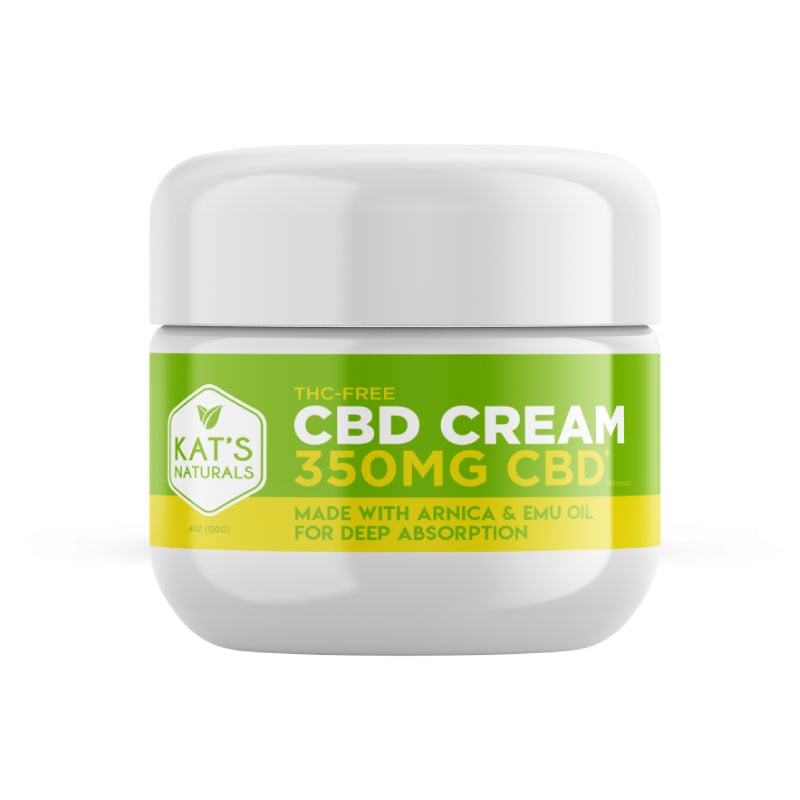
4. Topical Application
During topical application, CBD lotions, creams, and other products are applied directly to the skin.
Topical application is best for localized symptoms, such as local inflammation and pain caused by arthritis. Strictly topical application of CBD works locally — the applied CBD product never reaches the bloodstream.
Topical CBD has an effect on human sebocytes — cells that make up the sebaceous gland, which produces an oily secretion that keeps the skin flexible, also known as sebum [7]. This also makes CBD a great additional ingredient for skincare products.
When applied topically, it is expected for CBD to enter the skin via the transfollicular route and accumulate in the sebaceous gland. This means that CBD can enter through the hair follicles into the sebaceous gland to achieve a local effect [8].
Part of the topical administration is the transdermal application where CBD is administered into the skin but is absorbed by the skin to reach the systemic circulation.
How Long Does CBD Stay in the Urine?
Research on how long CBD is detectable in urine is scarce. In a 2016 study, researchers from Pacific Toxicology Laboratories in Chatsworth, California, administered different cannabis products rich in CBD to a controlled group of 15 participants [9].
After two hours of administration, 14 out of 15 participants tested positive for CBD and THC metabolites. The researchers followed one participant after the last day of administration to find out that CBD was no longer detectable in the participant’s urine after only 24 hours.
Related: Will CBD Show Up in a Drug Test?
Does CBD Interact With Other Drugs?
Yes, CBD may interact with other drugs — which may speed up, or prolong the time it takes to excrete CBD from the body.
The very first pharmacological effect of CBD ever observed was related to drug interaction. CBD is both a substrate and an inhibitor of CYP450 enzymes, so it could interfere with the metabolism of other drugs.
One study examined the potential drug interactions between a THC/CBD oromucosal spray and CYP450 inducers and inhibitors in various dose regimens.
The study done on healthy male subjects showed that inducers of CYP3A4, an enzyme involved in the metabolism of CBD significantly reduced the peak plasma concentration of CBD. On the other hand, a CYP3A4 inhibitor nearly doubled the peak plasma concentration of CBD [5].

The Bottom Line: How Long Does CBD Last In Your System?
Single-use CBD doesn’t stay in your system for longer than a week — even if taken in the highest dose.
However, with long-term use, CBD may take a week or more to completely clear the body. This is primarily due to the fact that CBD concentrations build up over time in the bloodstream and fat storage if it’s not completely cleared after each use.
The amount of CBD that stays in your system after a dose depends on several factors, including the method of consumption, dosage, and frequency of use, and the use of other medications.
References
- Consroe, P. (1991). Assay of plasma cannabidiol by capillary gas chromatography/ion trap mass spectroscopy following high-dose repeated daily oral administration in humans. Pharmacology, Biochemistry, and Behavior. doi: 10.1016/0091-3057(91)90357-8
- Millar, S. A. (2018). A Systematic Review on the Pharmacokinetics of Cannabidiol in Humans. Frontiers in Pharmacology. doi: 10.3389/fphar.2018.01365
- Nadulski, T. (2005). Randomized, Double-Blind, Placebo-Controlled Study About the Effects of Cannabidiol (CBD) on the Pharmacokinetics of D9-Tetrahydrocannabinol (THC) After Oral Application of THC Versus Standardized Cannabis Extract. The Drug Monit, 27(6).
- Rongrong, J. (2011). Identification of cytochrome P450 enzymes responsible for metabolism of cannabidiol by human liver microsomes. Life Sciences, 89(5-6). doi: https://doi.org/10.1016/j.lfs.2011.05.018
- Ujváry, I. (2016). Human Metabolites of Cannabidiol: A Review on Their Formation, Biological Activity, and Relevance in Therapy. Cannabis and Cannabinoid Research. doi: 10.1089/can.2015.0012
- Gavhane, Y. (2012). Loss of orally administered drugs in GI tract. Saudi Pharmaceutical Journal. doi: 10.1016/j.jsps.2012.03.005
- Zgair, A. (2017). Oral administration of cannabis with lipids leads to high levels of cannabinoids in the intestinal lymphatic system and prominent immunomodulation. Scientific Reports. doi: 10.1038/s41598-017-15026-z
- Bruni, N. (2018). Cannabinoid Delivery Systems for Pain and Inflammation Treatment. Molecules, 23(10). doi: 10.3390/molecules23102478
- Wertlake, P. (2016). A urinary test procedure for identification of cannabidiol in patients undergoing medical therapy with marijuana. Journal of Pain Research. doi: 10.2147/JPR.S96856

